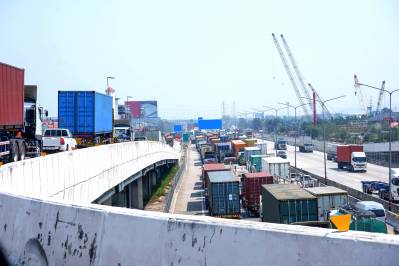
Truck capacity remains tight during this peak season and this is expected to continue into 2021 as inventories are replenished. We are seeing all-time highs in the number of loads in the spot market. Despite the impact of Covid-19, capacity has been reduced by a decrease in the truck driver workforce that occurred during the pandemic. This resulted from some carriers going out of business, some selling excess equipment, an increase in insurance rates, and some drivers receiving sufficient income from COVID-related government aid to stay out of the workforce and/or refusing to work to prevent themselves from being infected.
Although many businesses slowed or paused their operations at the onset of the pandemic, there was an influx of shipments as North American markets began to reopen. It should also be noted that since freight transportation is deemed an essential service, cross-border shipping has remained open. While some sectors of the economy (i.e. travel, restaurants etc.) remain depressed, the surge in freight demand has continued as companies seek to return to their usual operations and recoup lost profits. U.S. Xpress (NYSE: USX) noted in a late-September publication that rate increases in 2021 needed to be in the 10%-plus range to recoup the impact of the last two negative bid cycles and two years’ worth of cost inflation.
As a result of this shortage of drivers and the high demand for freight transportation, carriers are being more selective with the allocation of their assets and are raising rates. This fall we are hearing of freight embargoes as certain carriers restrict the availability of their assets to their highest yielding customers and lanes.
There has also been tight capacity across intermodal rail. Due to the influx of freight that followed the initial downturn at the start of the pandemic, there has been a shortage of available equipment, including containers and chassis, at railroad terminals and ramps across all major metropolitan areas. The congestion from this abundance of freight has led to frequent delays ranging from 24-72 hours in key markets. There is also a shortage of draymen due to organizational restructuring at various drayage companies, including layoffs, furloughs, leave of absences, etc.
Shippers have been pulling record amounts of freight into the ports of Los Angeles (+18% YoY in August) and Long Beach (+13% YoY in August) over the past few months. A good portion of the imported freight, which ships in international 20-foot and 40-foot containers, gets placed directly onto the rails. The unexpected surging container volumes have led to the implementation of peak season surcharges for any noncontracted freight that are extremely cost-prohibitive, pushing a lot of the excess volume to trucking. This move exaggerates the already tight truckload market by keeping a lid on overall domestic surface capacity.
What can shippers do to protect their businesses from lost sales and profits due to capacity shortages? Here are a few items to consider.
1. Create Accurate Updated Shipping Volume Forecasts
Each shipper needs to understand the true impacts of Covid-19 on its customers, operations and on its ability to serve its markets. There is a requirement to Identify changes in consumer buying habits and shipping patterns. The culmination of this exercise should be updated shipping volumes for each geographical region and mode.
2. Understand your Freight Transportation Needs, Options and Trade-Offs
This data needs to be correlated with truck and rail capacity. Is the company able to find capacity and provide the required service levels for each of its businesses? Will it be able to do so in the future? Can it find sufficient truckload capacity to its DCs and customers? What about its LTL B to B and B to C shipments? Looking to the future, are there any requirements to convert freight from over the road to Intermodal or from truckload to LTL, on occasion, to meet customer demand?
3. Review the Status of your Relationships with your Core Carriers/Add New Carriers
Every shipper should be communicating with its core carriers so it can determine where it stands in securing capacity. For consistent traffic, consider placing it under contract to reduce the risks of going on the spot market. As capacity tightens, examine where the company is vulnerable to capacity shortages and large rate hikes. Identify some mode and carrier options. This should include both asset-based and non-asset-based freight brokers and logistics companies. Keep in mind that these companies will likely have a much larger data base of carriers than most shippers possess.
4. Conduct a Freight RFP
This may be the most sensible approach to steer your company through the next 12 to 18 months. Invite core carriers and other interested parties to participate. As part of this exercise, sign contracts with multi-year rate agreements and obtain service and capacity commitments on your core traffic lanes. This will provide shippers with an added layer of security.
5. Reforecast your Freight Budget and Communicate the Changes to your Leadership Team
Freight costs will likely be much different this year as compared to last year. The significant increase in the company’s freight budget will likely be a jolt to many business leaders. Smart, proactive shippers should be informing their leadership teams to minimize surprises and to allow them to craft strategies to protect their bottom lines..
To stay up to date on Best Practices in Freight Management, follow me on Twitter @DanGoodwill and join the Freight Management Best Practices group on LinkedIn. For help with your next RFP, contact us at dan@dantranscon.com.



















